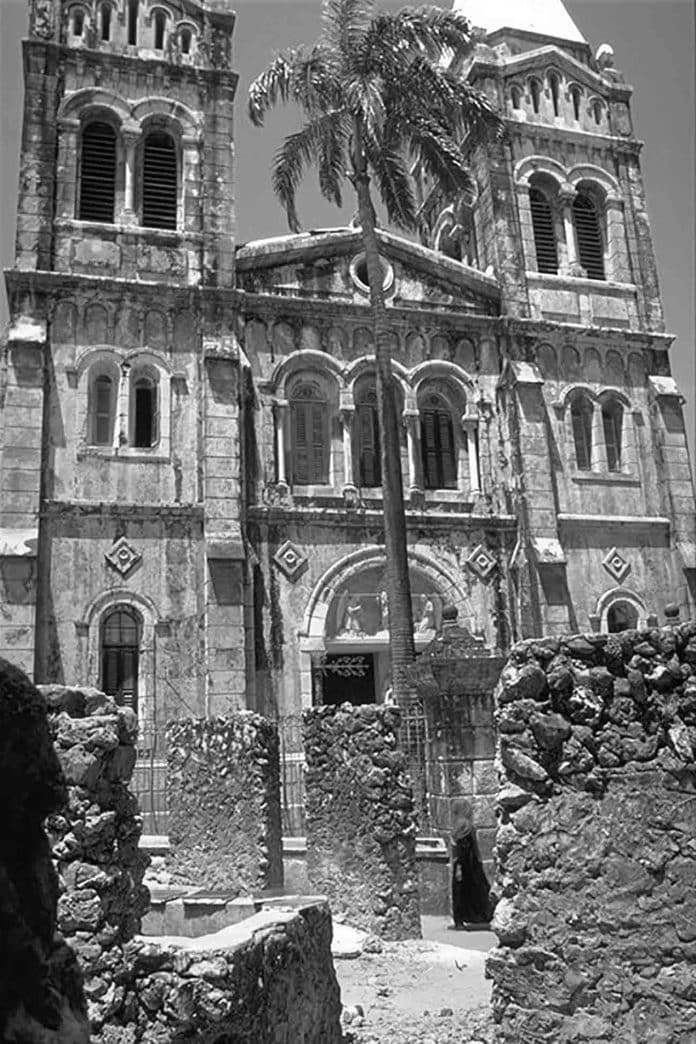Building Bridges between Cultures: The Architectural Fusion of St. Joseph’s Cathedral in Zanzibar City
Introduction to St. Joseph’s Cathedral in Zanzibar City
St. Joseph’s Cathedral, located in Zanzibar City, is a remarkable architectural masterpiece that stands as a testament to the fusion of diverse cultures. With a rich historical background, this cathedral showcases a unique blend of Arab and European influences, creating a harmonious representation of the cultural diversity found in Zanzibar. This article delves into the captivating history, architectural features, religious significance, preservation efforts, and cultural impact of St. Joseph’s Cathedral in Zanzibar City.
Historical Background of St. Joseph’s Cathedral
St. Joseph’s Cathedral in Zanzibar city has a fascinating history that dates back to the late 19th century. It was built during the era of British colonial rule in Zanzibar, which was a significant center for trade and cultural exchange. The cathedral was constructed to serve the growing Catholic community in the city, which consisted of both local residents and European settlers.
Architectural Features of St. Joseph’s Cathedral in Zanzibar City
The architectural features of St. Joseph’s Cathedral are a true marvel. The building combines elements of both Arab and European styles, resulting in a harmonious blend of cultures. The exterior of the cathedral showcases intricate Arabesque motifs, with delicate arches and geometric patterns adorning the walls. The interior, on the other hand, reflects European influences with its grand columns, stained glass windows, and ornate decorations.
The Fusion of Cultures in St. Joseph’s Cathedral
St. Joseph’s Cathedral stands as a symbol of cultural fusion, representing the harmonious coexistence of Arab and European influences in Zanzibar. The fusion of these cultures is evident in the architectural design, as well as in the religious practices and traditions observed within the cathedral. The Catholic community in Zanzibar, comprising both locals and foreigners, has embraced this fusion, creating a unique and inclusive environment within the cathedral walls.
Influences of Arab and European Architecture in St. Joseph’s Cathedral
The influences of Arab and European architecture in St. Joseph’s Cathedral are distinct and captivating. The Arab influences can be seen in the arches, domes, and intricate geometric patterns that adorn the exterior of the cathedral. These features are reminiscent of the rich architectural heritage found in the Arab world. On the other hand, the European influences are evident in the grandeur and opulence of the interior, with its vaulted ceilings, statues, and ornate decorations.
Symbolism and Religious Significance of St. Joseph’s Cathedral
St. Joseph’s Cathedral holds great religious significance for the Catholic community in Zanzibar. It is a place of worship, prayer, and reflection for both locals and visitors. The cathedral is dedicated to St. Joseph, the patron saint of workers and the protector of families. The symbolism within the cathedral, such as the stained glass windows depicting biblical scenes and the statues of saints, adds to the spiritual atmosphere and enhances the religious experience of those who visit.
Preservation and Restoration Efforts of St. Joseph’s Cathedral
Preserving the historical and cultural heritage of St. Joseph’s Cathedral is of utmost importance. Efforts have been made to ensure the structural integrity of the building and to restore any damage caused by natural elements and the passage of time. The restoration work aims to maintain the authenticity of the cathedral while ensuring its longevity for future generations to appreciate and enjoy. These preservation efforts not only protect the physical structure but also safeguard the cultural significance and historical value of St. Joseph’s Cathedral.
Cultural Impact of St. Joseph’s Cathedral in Zanzibar City
St. Joseph’s Cathedral has had a profound cultural impact on Zanzibar City. It serves as a symbol of unity, bridging the gap between different cultures and fostering a sense of community among its diverse congregation. The cathedral also attracts tourists from around the world, who come to admire its architectural beauty and learn about the rich cultural heritage of Zanzibar. This cultural exchange and appreciation contribute to the overall development and promotion of Zanzibar City as a vibrant and inclusive destination.
Visiting St. Joseph’s Cathedral – Tips and Recommendations
For those planning to visit St. Joseph’s Cathedral, it is advisable to dress modestly and respectfully, as it is a place of worship. Visitors should be mindful of the religious significance of the cathedral and maintain a quiet and reverent demeanor. It is also recommended to take a guided tour to fully appreciate the historical and cultural aspects of the cathedral. Additionally, exploring the surrounding area of Zanzibar City and immersing oneself in the local culture further enriches the experience.
St. Joseph’s Cathedral in Zanzibar City stands as a remarkable testament to the fusion of cultures and the power of architectural harmony. The blend of Arab and European influences creates a unique and captivating experience for visitors, showcasing the cultural diversity and historical significance of Zanzibar. As a place of worship, St. Joseph’s Cathedral holds great religious and symbolic value for the Catholic community in Zanzibar. Moreover, its cultural impact and preservation efforts ensure that future generations can continue to appreciate and learn from this architectural marvel, building bridges between cultures for years to come.
For more articles related to Infrastructure in Tanzania, click here!































